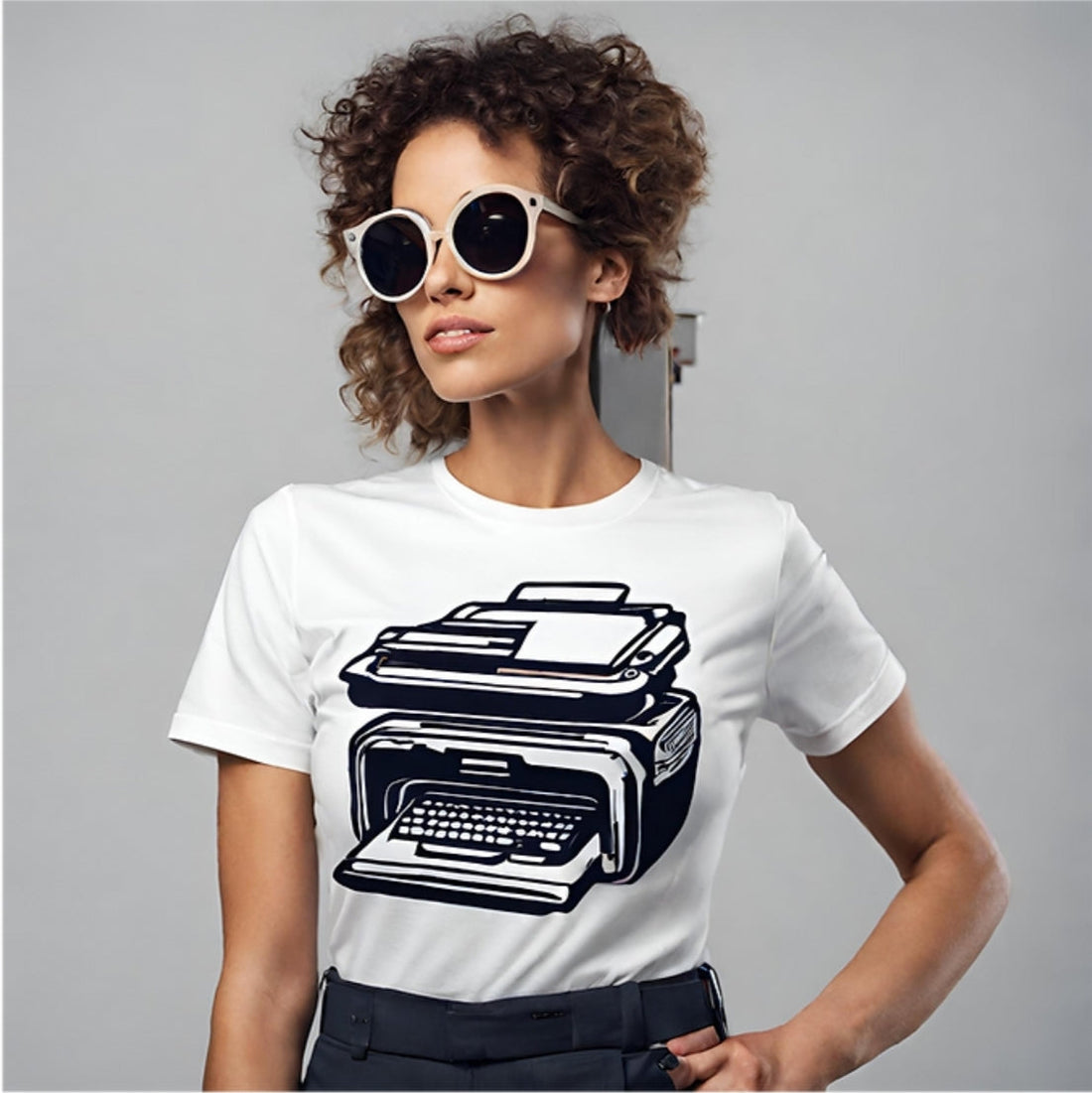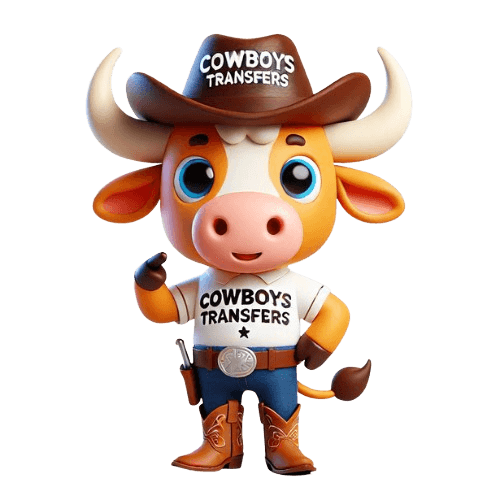
Does DTF work on 100% cotton?
Share
Does DTF Work on 100% Cotton? A Guide by Dallas DTF Transfers
Direct-to-Film (DTF) printing has revolutionized custom apparel printing by offering versatility, vibrant colors, and long-lasting designs. One of the most common questions we get at Dallas DTF Transfers is: Does DTF work on 100% cotton? The answer is a resounding yes! DTF printing works exceptionally well on 100% cotton, making it an ideal choice for T-shirts, hoodies, and other apparel. In this guide, we’ll explain why DTF is perfect for cotton fabrics, how it works, and why it’s a game-changer for custom printing.
Why Does DTF Work Well on 100% Cotton?
DTF printing is designed to work on a variety of fabrics, including natural fibers like cotton. Here’s why it’s a great match for 100% cotton:
-
No Pre-Treatment Required
-
Unlike Direct-to-Garment (DTG) printing, which requires pre-treatment on cotton fabrics, DTF printing eliminates this step. This saves time and simplifies the process.
-
-
Strong Adhesion
-
The hot-melt adhesive powder used in DTF printing creates a strong bond with cotton, ensuring the design stays intact even after multiple washes.
-
-
Vibrant Colors
-
Cotton’s smooth texture allows DTF inks to produce bright, vivid, and high-resolution designs that stand out.
-
-
Breathable and Comfortable
-
DTF prints are lightweight and flexible, maintaining the natural breathability and comfort of cotton fabrics.
-
How Does DTF Printing Work on 100% Cotton?
The process of applying DTF transfers to 100% cotton involves several steps:
-
Design Preparation
-
A digital design is created and printed onto a PET film using CMYK and white inks.
-
-
Adhesive Powder Application
-
A hot-melt adhesive powder is evenly applied to the printed film, ensuring a strong bond with the fabric.
-
-
Curing the Film
-
The adhesive-coated film is cured with heat, preparing it for transfer.
-
-
Heat Press Transfer
-
The PET film is placed onto the cotton fabric and transferred using a heat press at the correct temperature, pressure, and time.
-
-
Peeling the Film
-
Once the fabric cools, the PET film is peeled away, leaving behind a vibrant and durable design.
-
Benefits of Using DTF on 100% Cotton
-
Wide Application
-
DTF works well on a variety of cotton products, including T-shirts, hoodies, tote bags, and more.
-
-
Durability
-
DTF prints on cotton are resistant to cracking, peeling, and fading, even after multiple washes.
-
-
Cost-Effective
-
DTF printing eliminates the need for pre-treatment and extensive setup, making it a cost-effective solution for custom printing.
-
-
Eco-Friendly
-
Many DTF inks and materials are water-based and environmentally friendly.
-
-
Vivid Colors and Fine Details
-
Cotton’s smooth surface enhances the clarity and vibrancy of DTF designs.
-
Applications of DTF Printing on Cotton
DTF printing is ideal for various cotton-based projects, including:
-
Custom T-Shirts: Create vibrant designs for personal or business use.
-
Hoodies and Sweatshirts: Perfect for adding bold, durable graphics.
-
Tote Bags: Add logos or custom artwork to cotton bags.
-
Corporate Branding: Print company logos on uniforms and promotional items.
-
Event Merchandise: Design apparel for concerts, sports events, or fundraisers.
How to Maximize Results When Using DTF on 100% Cotton
To achieve the best results, follow these tips:
-
Use High-Quality Materials
-
Choose premium PET films, inks, and adhesive powders for optimal performance.
-
-
Ensure Proper Heat Press Settings
-
Use the recommended temperature (around 310°F), pressure, and transfer time (10–15 seconds) to achieve a strong bond.
-
-
Wash and Care Instructions
-
Wash garments inside out in cold water with mild detergent.
-
Avoid using bleach or fabric softeners.
-
Air dry or tumble dry on low heat.
-
-
Test Before Large Runs
-
Perform a test transfer to ensure the design adheres properly and meets quality standards.
-
DTF vs. Other Printing Methods on Cotton
Here’s how DTF compares to other common printing methods for 100% cotton:
| Feature | DTF Printing | DTG Printing | Screen Printing |
|---|---|---|---|
| Pre-Treatment Needed | No | Yes | No |
| Color Vibrancy | High | High | Medium to High |
| Durability | Excellent | Good | Excellent |
| Cost for Small Runs | Low | High | Medium |
| Fabric Compatibility | Wide Range | Cotton Only | Limited |
Real-World Examples of DTF on Cotton
-
Custom Apparel Businesses
-
A small business used DTF transfers to print intricate designs on 100% cotton T-shirts for a local event. The vibrant colors and durability impressed their customers.
-
-
Promotional Tote Bags
-
A company ordered custom cotton tote bags with their logo printed using DTF. The bags held up well during a week-long conference.
-
-
Team Uniforms
-
A sports team used DTF to print player names and numbers on cotton hoodies. The prints remained intact after multiple washes.
-
Why Choose Dallas DTF Transfers for Cotton Printing?
At Dallas DTF Transfers, we specialize in creating high-quality DTF transfers that work perfectly on 100% cotton fabrics. Here’s why customers trust us:
-
Premium Materials
-
We use top-of-the-line PET films, inks, and adhesive powders to ensure vibrant and long-lasting designs.
-
-
Expert Techniques
-
Our team follows industry-best practices to deliver flawless results every time.
-
-
Custom Solutions
-
Whether it’s a single custom order or a bulk project, we tailor our services to meet your needs.
-
-
Fast Turnaround
-
We offer quick and reliable service without compromising on quality.
-
Conclusion
DTF printing is an excellent option for 100% cotton fabrics, offering vibrant colors, durability, and cost-effectiveness. Whether you’re printing custom T-shirts, tote bags, or hoodies, DTF delivers outstanding results without the need for pre-treatment. At Dallas DTF Transfers, we’re committed to helping you achieve high-quality prints that stand the test of time. Contact us today to learn more and start your next project!
